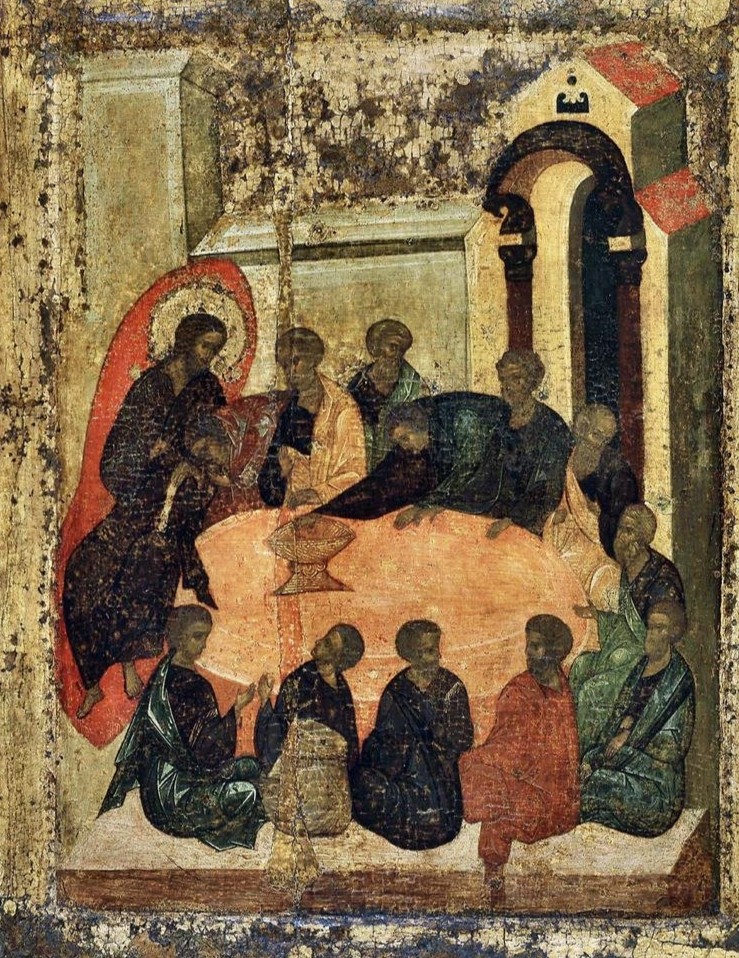As part of his duties when promoted to Concertmaster in Weimar in March 1714, Bach was expected to share with the Kapellmeister and Vice-Kapellmeister the responsibility of presenting cantatas for the Sunday services at the Himmelsburg, the chapel at the Ducal palace. Kapellmeister Johann Samuel Drese was responsible for two pieces a month, his son Johann Wilhelm, Vice-Kapellmeister, would compose one, and Bach would write the other one.
For April 22, 1714, Bach presented BWV 12, his second such work. This Sunday was the third after Easter (also called “Jubilate” due to the text of the Introit for the day, “Jubilate Deo”). He reused the cantata for the same occasion ten years later, already in Leipzig.
The piece’s modest scoring reminds us of the space constraints of the Himmelsburg: one oboe, strings (including double viola, as it was customary for Bach in earlier years), bassoon, trumpet, and continuo. The vocal forces included soprano, alto, tenor and bass for the chorus and chorale, with the solo movements assigned to the alto, tenor and bass, as it had been the case as well for the prior month’s cantata, BWV 182.
The Gospel reading for Jubilate Sunday is John 16: 16-23, a segment of Jesus’ Farewell Discourse after the Last Supper, in which he warns his disciples of the trials and tribulations to come but comforts them by foretelling the joy they will experience in seeing him again. The cantata libretto is probably by Salomo Franck, court poet in Weimar. It follows a similar structure as that of BWV 182: an opening chorus, the only recitative set to a scripture quote, and then three arias in a row. The final chorale is verse 6 of “Was Gott tut, das ist wohlgetan”, of 1675, by Samuel Radigast (1649-1708).
The cantata opens with a Sinfonia for the strings and continuo with a solo oboe. Marked “adagio assai”, the bass and low strings move slowly, while the violins are given constant sets of two-by-two sixteenth notes as written-out appoggiaturas, a clear and deliberate “sighing” motif. Above that weave, the oboe delivers a serene, highly ornamental line. Is this Bach’s way of contrasting the upcoming tribulations with the promised future joy?
In the chorus that follows, Franck’s dramatic language and strong imagery meet us right out of the gate – six powerful nouns relating to Jesus’ words in the passage of the Gospel, and a somewhat gruesome reference to Galatians 6: 17, about bearing the “brand-marks” of Jesus. Bach sets this striking text as massive sigh gestures alternating between the different voices, over an ostinato bass which repeats the “lamento” motif 12 times. Maybe once per disciple? After six iterations of the bass motif spent on just the first four words, “Angst und Not” are set homophonically at first in cycles 7 and 8, before the original musical language returns. The last iteration of the bass ostinato is for instruments only, which leads to the B-section marked “un poco allegro” – a strong contrast with its more dynamic, upbeat mood, as the text refers to the “mark of Jesus”. The movement is structured as a “da capo”, with a restatement of the entire first section. Bach reused this music decades later, adapting it for the “Crucifixus” of the B-minor Mass.
The only recitative of the cantata is next, whose text is a quote from the Book of Acts (Acts 14: 22), that relates to the topic of the Gospel. Bach gives it to the alto and sets it with string accompaniment, plus the bassoon joining the continuo. The first violin depicts the entry into the Kingdom of God via an ascending C major scale. The alto picks up this image on the words “Reiche Gottes”, which are also set to an upward scale.
The alto aria, a reference to the Jesus’ forthcoming passion, continues the libretto pattern of chaining together powerful nouns, and provides hope with the reference to comfort in the last line. Bach sets it as a da-capo piece, accompanied by a busy and ornamental solo oboe line and continuo.
The powerful and energetic bass aria turns to the first person with a powerful statement of purpose involving making Jesus’ suffering one’s own. This text is illustrated musically by an imitative texture, as the thematic material is presented by the first violin, followed closely by the second violin and a few bars later by the voice. The last statement of the voice on the words “Ich folge Christo nach…” uses the upward scale motif first introduced in the alto recitative.
The tenor aria brings back hope, referencing Jesus’ words about grief turning to joy. It features the surprise appearance of a solo trumpet as the accompanying instrument, which carries the tune associated with the hymn “Jesu, meine Freude”. This musical quote may have been prompted by the text of the hymn’s final stanza, which says “For those who love God / even their afflictions / become pure sweetness.” The peculiar roadmap of the aria follows the structure of the hymn melody.
The sixth stanza of Radigast’s hymn was chosen by Franck due to its semantic alignment with the rest of the libretto. The three nouns of the fourth line (“tribulation, death and misery”) must have called his attention! Bach sets it in four-part harmony, with the instruments doubling the voices and an independent top part for the first violin and the trumpet. The first few notes of the chorale tune connect directly with the theme from the bass aria and, more freely, also with the ascending scales of the alto recitative.

